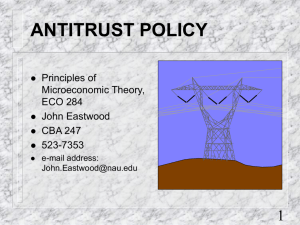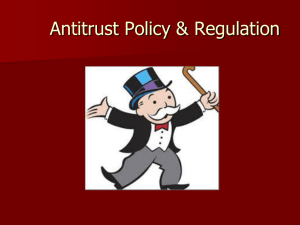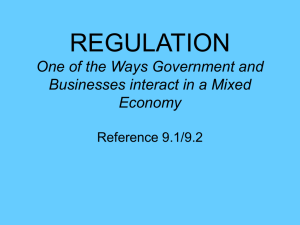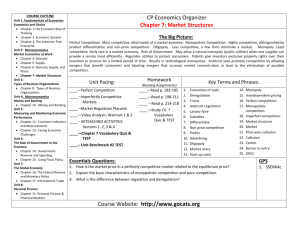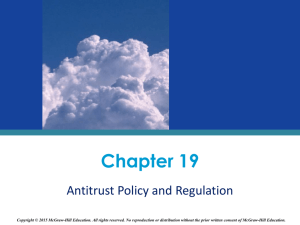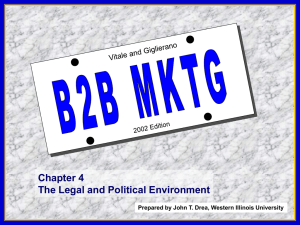November 8
advertisement
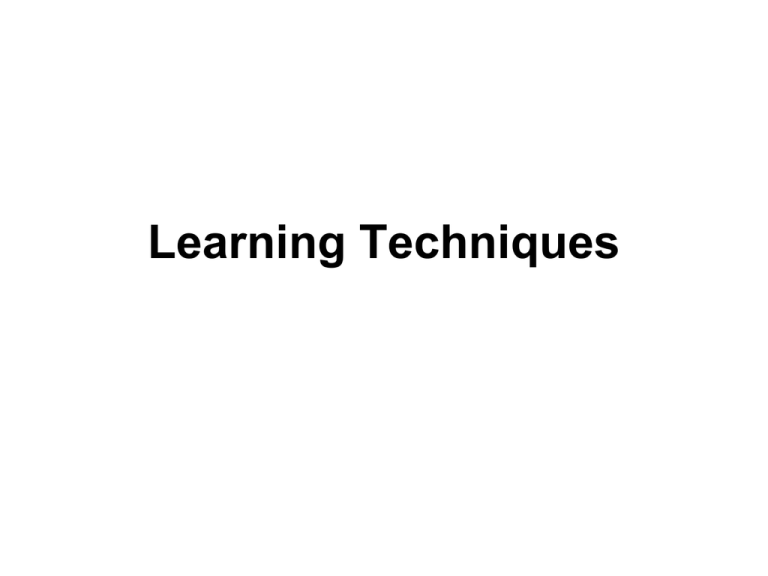
Learning Techniques Bloom's Taxonomy • Benjamin Bloom created this taxonomy for categorizing the level of abstraction of questions that commonly occur in educational settings. The taxonomy provides a useful structure in which to categorize test questions and other assignments • Professors characteristically ask questions within particular levels, and if students can determine the levels of questions that will appear on exams, they will be able to study using appropriate strategies. Adapted from: Bloom, B.S. (Ed.) (1956) Taxonomy of educational objectives: The classification of educational goals: Handbook I, cognitive domain. New York ; Toronto: Longmans, Green. Bloom’s Taxonomy Competence Knowledge Comprehension Application Skills Demonstrated observation and recall of information knowledge of dates, events, places knowledge of major ideas mastery of subject matter Question Cues: list, define, tell, describe, identify, show, label, collect, examine, tabulate, quote, name, who, when, where, etc. understanding information grasp meaning translate knowledge into new context interpret facts, compare, contrast order, group, infer causes predict consequences Question Cues: summarize, describe, interpret, contrast, predict, associate, distinguish, estimate, differentiate, discuss, extend use information use methods, concepts, theories in new situations solve problems using required skills or knowledge Questions Cues: apply, demonstrate, calculate, complete, illustrate, show, solve, examine, modify, relate, change, classify, experiment, discover Bloom’s Taxonomy Competence Analysis Synthesis Evaluation Skills Demonstrated seeing patterns organization of parts recognition of hidden meanings identification of components Question Cues: analyze, separate, order, explain, connect, classify, arrange, divide, compare, select, explain, infer use old ideas to create new ones generalize from given facts relate knowledge from several areas predict, draw conclusions Question Cues: combine, integrate, modify, rearrange, substitute, plan, create, design, invent, what if?, compose, formulate, prepare, generalize, rewrite compare and discriminate between ideas assess value of theories, presentations make choices based on reasoned argument verify value of evidence recognize subjectivity Question Cues: assess, decide, rank, grade, test, measure, recommend, convince, select, judge, explain, discriminate, support, conclude, compare, summarize Classroom Assessment Techniques Some examples Preconception Check • Initial course activity • Assesses students’ prior knowledge – What is correct – What is a misconception • Improves chances of learning new material correctly and integrating it into knowledge Preconception Check • Example – Ask three questions • Which country has the highest growth rate? • How long has it been growing at that rate? • What improvements have been made to living conditions in that time? – Shuffle and return to students as basis for discussion – Ask from where the answers originated and follow-up with a subjective question that incorporates student’s experience (i.e. would you want to live in that country). Empty Outline • Discover how well students have understood the important points of a lecture, reading, or presentation • Good for courses with a large amount of content presented in a structured manner • Use at conclusion of class or beginning of the next one. • Encourages students to pay attention and track progression of information • Helps instructor to refine teaching method and how to begin follow-up discussions/activities Empty Outline • Example – Distribute only main topic headings of your class outline – Ask students to fill in subheadings using their class notes – Assess for what is missing or misplaced Outline • AS-curve – The classical – The Keynesian AS-curve •• The The price price adjustment adjustment mechanism mechanism – Frictional unemployment – The quantity theory of money •• The The AD-AS AD-AS framework framework – The effects of shifts in aggregate demand – Supply-side economics – Dynamic scoring •• Long-run Long-run shifts shifts in in aggregate aggregate demand demand and and supply supply One-Minute Paper • Most often used • Stop class five minutes early to ask assessment questions • Manageable amounts of timely feedback on how well students are learning • Assesses more than recall – Evaluate what they recall – Self-assess to come up with a question • Useful after lecture, seminar, labs, study groups, presentation, exam • Quick and well suited for large classes One-Minute Paper • Example – What was the most important thing you learned during this class? – What important question remains unanswered? Concept Maps • Concept maps are tools for organizing and representing knowledge • Using models of from the course, students will work individually or in teams (two students) to prepare a diagram that integrates aspects of concepts presented • Templates available online (VUE project) • Alternative to written summary or assessment of ideas presented Concept Maps • Example: – Using the information from the lecture and text readings, develop a map that represents the connections and relationships surrounding Anti-trust Policy • • • • • • Begin with a list of all relevant topics Separate topics for similarities and contrasts Link together relationships and contrasts Present in a graphic form of your choosing Students evaluate all maps Grade based on number and correctness of links Map 2 Map 3 American Tobacco Company Sugar Standard Oil Market Definitions Guidelines Copper Trusts Horizontal Competitive Effects Follows Coal Abuse of power International Anti Trust Enforcement Assistance Externalities Creates need for Destructive Competition Consumer Inadequate Information US Anti Trust Policy Challenges to Anti-trust DuPont Case Counter Types Entry Effects Efficiency Gains Notify Court Challenges Old decision Section I Per Se Violations Wheeler Lea Act 1930 Enforces Section II Enforcement Examines Federal Trade Commission 1914 Anti-competitive mergers Strengthens Working conditions Department of Justice Hart-Scott Rodino Act 1976 Sherman Anti-Trust Act 1890 Foundation of Notify Relevant Markets Rule of Reason Competitor Balance of Trade Mergers Globalization Protects whereas Vertical Conglomerate European Union Protects Exploitation of Natural Resources High Tech Industries Defense Cutbacks Interlocking directories Price discrimination Reduces Competition Product design Stifles Innovation FDA CPSC EEOC EPA TVA AMT Optimal Level Public Ownership Electricity Costs & Inefficiency Airline Banking FERC focuses Is (Public Reg) Increases Degree of Effectiveness May lead to TV Broadcasting Natural gas Celler-Kefauver Act 1950 Electricity FCC State PUCs waning Industrial Regulation e.g. 1970 - 80’s Telecommunications Amends Rates, cost, & profits War Perpetual Monopolies Section VII growing Natural Monopoly Problems Natural gas Technological Changes is Protects against Telephone Water Post Office Social Regulation Tying contracts MB ≥ MC OSHA e.g. Outlaws Clayton Act 1914 production process focuses Public Utilities Emerging New Technologies e.g. •Higher Prices •Diminished Output •Deteriorating Service •Industrial Instability •Lower Safety Standards •Lower Prices •Increase Output •Benefits Economy •Benefits Consumers •Eliminate Bureaucratic Inefficiencies Deregulation has Controversies Cons Pros Map 5 Anti-Trust Acts Federal Trade Commission Act (1914) Sherman Act (1890) Allowed Courts to Damages for violations Break up monopolies into competitive firms Theories Heart-ScottRodino AntiTrust Improvement Act (1976) Structure Theory Requires Prohibit anticompetitive practices Fine and imprison Issue injunctions Outlawed Measure of power Expands the powers of state attorneys general to institute triple damage suites on behalf of injured Concentration of assets Joint Federal responsibility with US Justice Department which Collusive price fixing Clayton Act (1914) Issue cease-anddesist orders Outlawed Created 5 member Federal Trade Commission (FTC) Tying contracts Wheeler-Lea Act (1938) Investigate unfair competitive practices Policing deceptive acts or practices in commerce FTC as independent anti-trust agency amended by: through to CellerKefauver Act (1950) Reduce competition Made unfair & deceptive sales practices illegal Own initiative Misrepresentation of products Request of injured firms Block mergers concentration Dominant market positions closed loophole Prohibiting firms from obtaining physical assets of another firm 1994 International Anti-Trust Enforcements Act ratio Sales and/or assets of one or a few companies in an industry: total sales and/or assets of entire industry Excessive concentration of market power Power to Fix prices Price inflation Determine which products come to market and in what volume Inefficiencies in production Decline in competition Sell a product to a customer only if customer bought other products from supplier Anti-trust laws enforced in other nations? cartels Fixed pricing arrangements huge profits meaning Globalization hold must Break up concentration of economic power Reduced costs=lower prices for consumers US Enforcement Agencies to make cooperative efforts with foreign antitrust officials Concentration inhibited by world markets/ powerful global competitors Significant cost savings Eliminate duplications Create other efficiencies negatives Leave fewer companies in the industry Increase concentration Collusion of remaining companies May lead to price increases Concerned with Define market and impact Innovation vs. competition Analyze competitive effects Assure ease of entry into the market Benefits to customers Higher-quality products Lower-priced products and Intellectual monopoly power? Mergers Guidelines Leads to Can current Anti-trust laws deal with the issues created by high technology industries? Or Prevent concentration from developing Allowed for Ensures product & process innovation Map 6 positives Intellectual properties Corporate size + large market share = monopoly Many companies same directors conspire to control market High Technologies Seek efficient business performance Leads to Acquisition of stocks of competing corporations Achieve allocative efficiency Trustees exercise control of firms as a single company Appropriate market structures When substantially lessens competition to drive competition out of business Interlocking directors Promote competition In return Creates a monopoly or Price discrimination Hold public hearings Led to Companies to notify the FTC & DOJ of an intention to merge if their valuations exceed specified amounts Sharpened, clarified, & elaborated Prevent Monopolization Receive certificates Performance Theory Challenges purpose and Sales of one or a few companies in the industry Monopolizing Dividing up markets Competing organizations Transfer legal title to trustees Assure innovation? Investigate expected efficiency gained to be passed on to consumers Analyze nonhorizontal mergers which may result in competitive problems Celler-Kefauver Act of 1950 Violators may be fined and imprisoned. Parties affected by the illegal actions may sue for treble damages. Consequences Consequences Tying contracts Any person who does or attempts to monopolize trade will be charged with a felony. Enforces Acquisition of stalk of competitors when the outcome will be a reduction in competition. Price discrimination Later Contracts among states And foreign nations Are illegal if there is a Conspiracy to hinder Trade. Amended by Amended to a misdemeanor Forbids Outlaws Prohibits Clayton Act of 1914 Enforces Prohibits Sherman Act of 1890 The formation of interlocking directories. Antitrust Policy Interpretation Issues Federal Trade Commission Act of 1914 Verses Duty Has the power Monopoly Behavior May issues Cease-and-desist order Established May investigate unfair competitive practices on their own initiative or upon request. Responsible for enforcing the antitrust laws Monopoly Structure Wheeler-Lea Act Made The FTC as an independent antitrust agency Unfair and deceptive sales practices illegal Map 7 Responsible for Policing for Deceptive Acts or Practices In Commerce Outlawed restrains of trade & Monopolization 1890 Department of Justice & FTC I N D U S T R Y FDA FRB FTC FHLBB FDIC FCC FAA FMC NCR FERC Sherman Act Outlaws Price Discrimination Forbids Tying Contracts Prohibits Interlocking Directorates -Sharpens and Clarifies the Sherman Act Wheeler-Lea Act Clayton Act CellerKafauver Act ANTITRUST LAWS GOVERNMENT REGUALTIONS A G E N C I E S AGENCIES The New Deal Developed and Stimulated A depressed Economy Amendment To Clayton Act to prohibit Mergers with Completing Firms Government attempt to control Behavior of citizens, corporations Or sub-governments F U N C T I O N A L SEC NLRB EEOC EPA NHTSA OSHA CPSC MSHA A G E N C I E S Map 8 Antitrust Policy Trust Effectiveness is determined by Sherman Act of 1890 Outlawed Monopolization (Section 2) Strict enforcement Method of Corporate Consolidation In which Governmen t Actions Promote Competition Transferred Then operated Court interpretations Created need for clarification of law Prohibits Limited scope and created ambiguities Price Discrimination Inhibit and Prevent Growth of Monopoly Firms as Single Company Tying Contracts Acquisition of stocks when outcome is reduced competition Balance of Trade Unfair Competition Produced less output Tradeoffs between different goals Achieve Allocative Efficiency Group of Trustees Charged higher prices Clayton Act of 1914 Vs. Legal Title Certificates Laws Designed to Stock Owners of Competing Organizations Restraints of Trade/ Commerce (Section 1) Formation of Interlocking Directorates Defense Cutbacks Underallocation of resources Behavior Monopoly Can be defined in terms of Differ based on Celler-Kefauver Act of 1950 Closes loop with Prohibits Acquisition of physical assets Structure Opposed by Small Business Owners (& Farmers,) Consumer, Labor Unions, and Economists Federal Trade Commission Act Emerging New Technologies Led to creation of Map 9 Case Studies and Simulations • Use of real world contexts to reinforce student learning • Participant-centered learning • Harvard cases and simulations – www.hbsp.harvard.edu/educators • MERLOT • Capsim Information Technology in the Classroom IT and Instruction • • • • • Learning Styles Course Management Software PowerPoint Online Content Clickers Learning Styles • • • • • • Active/Passive Visual Verbal Written Application Individual/Teams Using PowerPoint • Edit publisher’s slideshows • Keep it simple – One font (i.e. arial) – White background – Black text – Avoid sounds and complex text animation – Do not use clip art • Lecturer remains the center of attention Online Content • Economics Resources for University and College Teaching • MERLOT • GlobalEdge • Podcasts – Radio Economics – Gap Minder • Visual Connections – Worldmapper – VUE Project • http://newton.uor.edu/facultyfolder/gerald_groshek/ Course Management Software • Blackboard • Moodle • Sakai http://moodle.org
